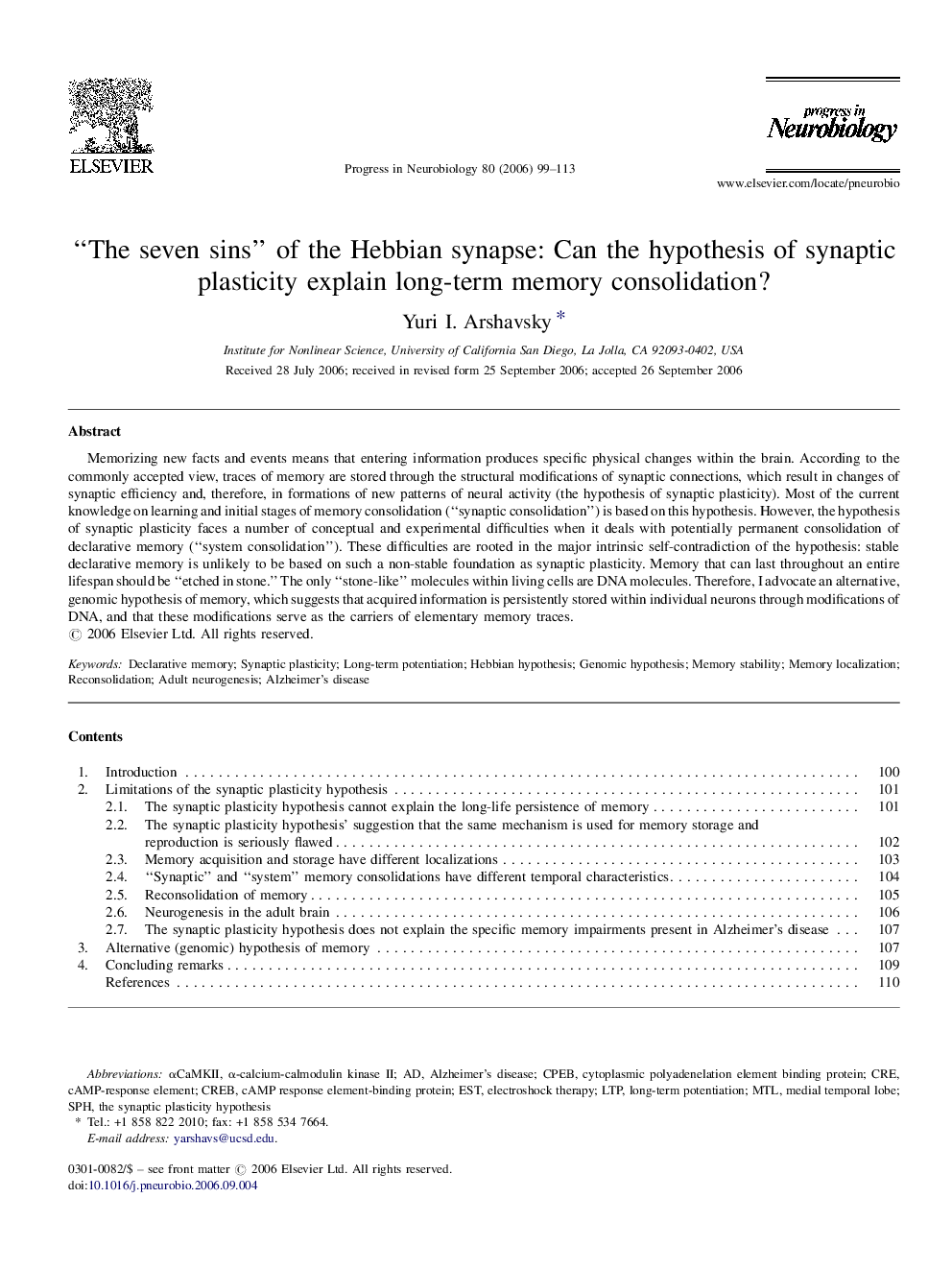| Article ID | Journal | Published Year | Pages | File Type |
|---|---|---|---|---|
| 4354025 | Progress in Neurobiology | 2006 | 15 Pages |
Memorizing new facts and events means that entering information produces specific physical changes within the brain. According to the commonly accepted view, traces of memory are stored through the structural modifications of synaptic connections, which result in changes of synaptic efficiency and, therefore, in formations of new patterns of neural activity (the hypothesis of synaptic plasticity). Most of the current knowledge on learning and initial stages of memory consolidation (“synaptic consolidation”) is based on this hypothesis. However, the hypothesis of synaptic plasticity faces a number of conceptual and experimental difficulties when it deals with potentially permanent consolidation of declarative memory (“system consolidation”). These difficulties are rooted in the major intrinsic self-contradiction of the hypothesis: stable declarative memory is unlikely to be based on such a non-stable foundation as synaptic plasticity. Memory that can last throughout an entire lifespan should be “etched in stone.” The only “stone-like” molecules within living cells are DNA molecules. Therefore, I advocate an alternative, genomic hypothesis of memory, which suggests that acquired information is persistently stored within individual neurons through modifications of DNA, and that these modifications serve as the carriers of elementary memory traces.
